There is no doubt that colour plays a role in our everyday mood and how we feel in general. I think we would all agree that falling asleep is much easier when we're relaxed and in a happy frame of mind, so it stands to reason that how well we sleep and how rested we feel when we awake, will also be affected by the colour of our bedrooms.
Colour is among one of the main considerations when decorating a bedroom environment and therefore is a crucial element of bedroom decor and design. Use our colour list as a guide to choosing your ideal bedroom colour.
Blue
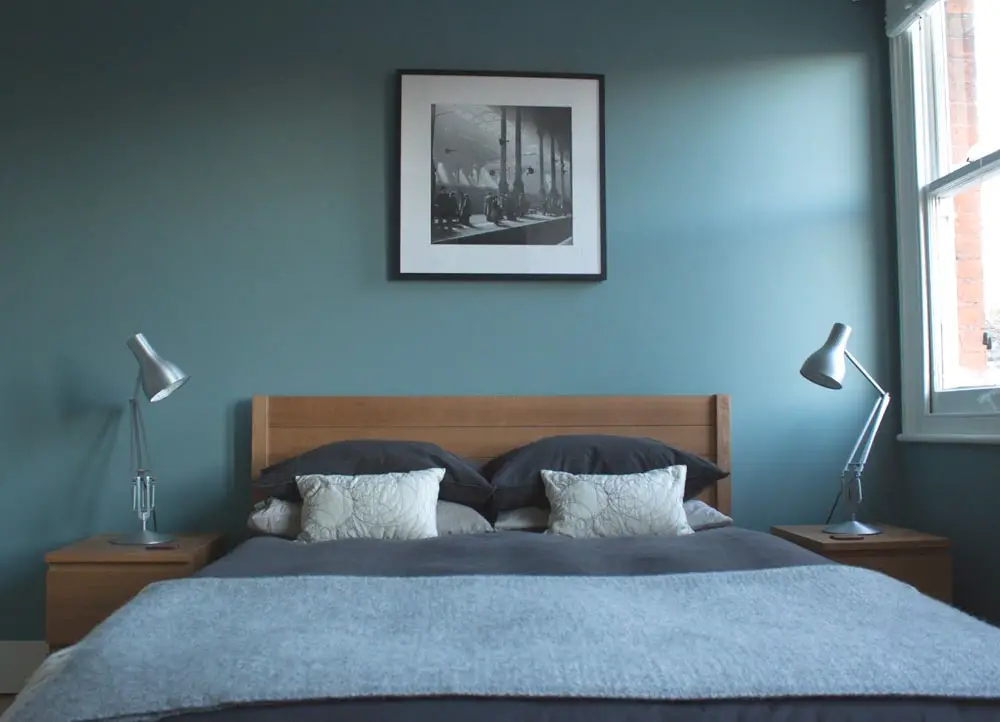
Image credit: pinterest.co.uk
Research studies have shown that exposure to the colour blue, whether dark, medium or light blue, can affect our mood and physiology in various ways.
Blue is often associated with calmness and relaxation, which could potentially help promote sleep. Soft blue tones may soothe your head, while stronger blues encourage introspection and clear thinking, according to colour psychology.
The colour blue has even been proven to lower blood pressure and relax the mind. The addition of blue furniture in your bedroom, as seen at omf.net.au, may also help with concentrating on your homework or college tasks.
It's worth bearing in mind, that although blue bedrooms could help with sleep, exposure to blue light, such as that emitted by electronic devices, can negatively interfere with melatonin production, which plays a key role in regulating sleep-wake cycles. So, avoiding blue light exposure in the evening hours could also help promote better sleep.
Silver
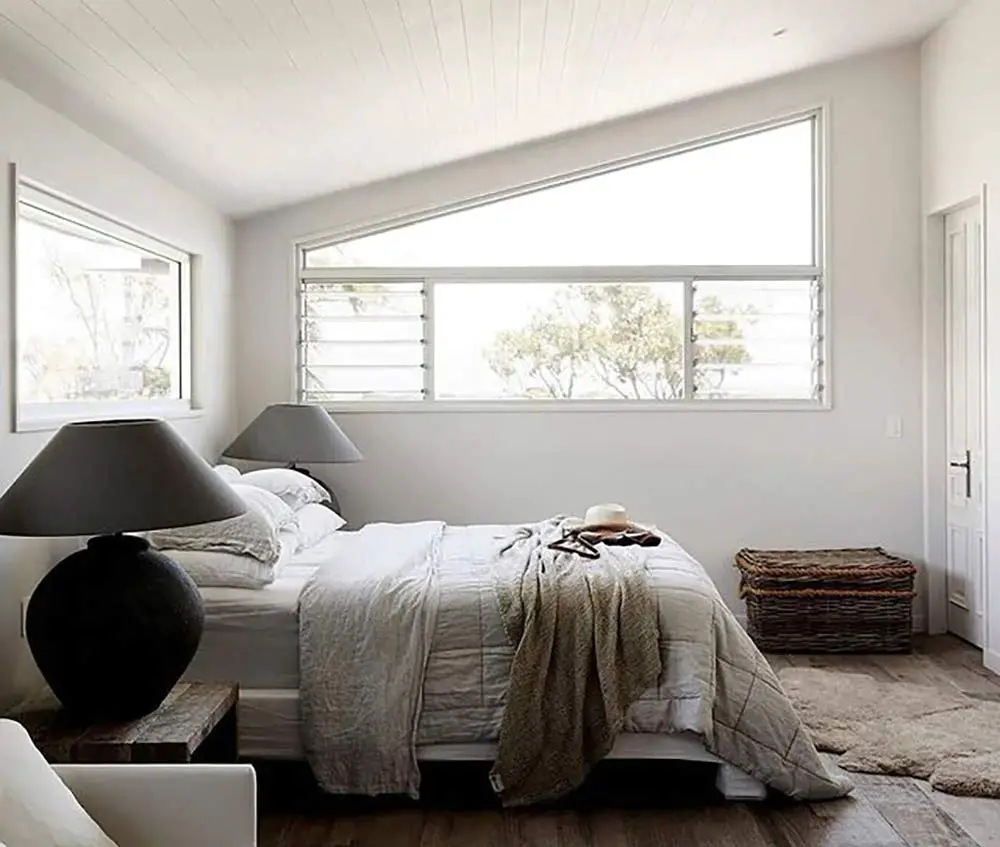
Image credit: wilsondorset-com
Silver is a good choice as a bedroom colour as it exudes a calming energy that can also uplift your mood, unlike medium to dark greys which may induce more depressive feelings. To achieve a tranquil ambience, it is important to choose a matte silver colour as opposed to a bright shiny finish, as the reflective properties of shiny surfaces can disrupt the calm atmosphere by reflecting bright light, thus disturbing your sleep.
You may want to consider pairing light grey or matte silver with a gentle blue accent wall for a sophisticated look. This combination adds depth and character to your space, creating an extra cosy atmosphere that is both elegant and inviting.
With the right silver shade and other colour combinations, your silver-themed bedroom can create an exquisite and luxurious ambience that you'll love to fall asleep in.
White
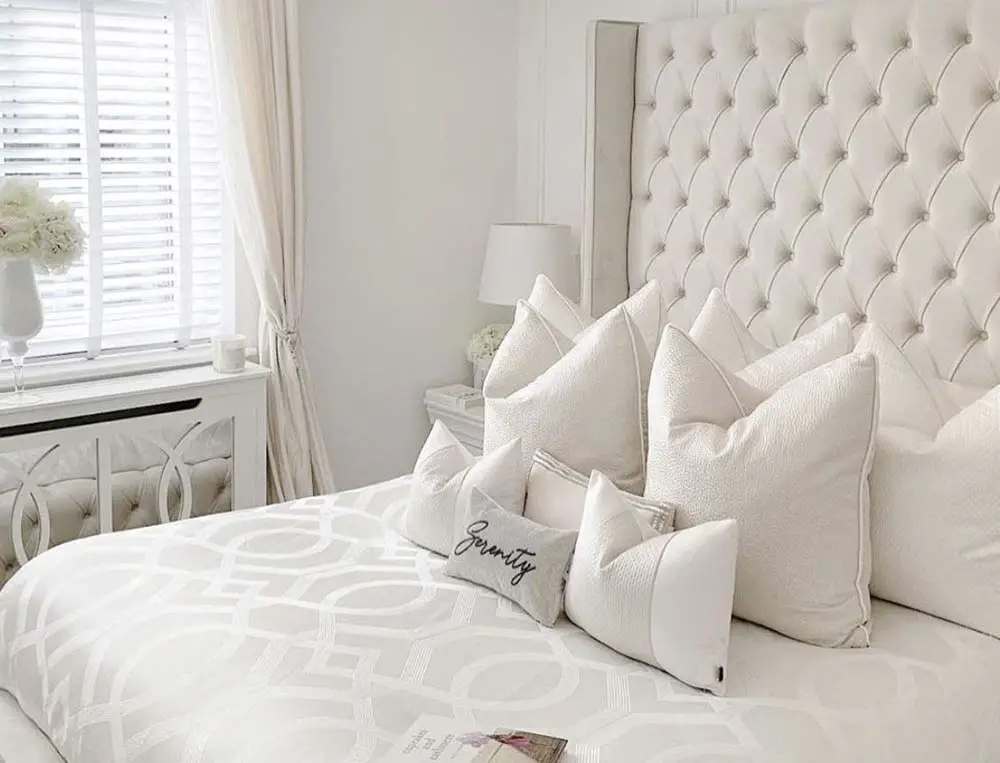
Image credit: makemyblinds.co.uk
White is a soothing, neutral colour that promotes contentment and conjures up happy feelings and peacefulness. It has also been rated to be among the least distracting wall colours in offices and other workplaces.
One possible reason why white may be associated with relaxation and calmness is that it is often associated with cleanliness and purity, creating a sense of freshness and calm in any room. Additionally, white can reflect light, which makes any room feel brighter and more spacious.
Including white in your sleeping area and on your bedroom walls could certainly reduce distractions and aid in your pre-sleep relaxation. In recent tests carried out, students overwhelmingly preferred white bedroom walls in their university rooms, compared to other colours tested.
Together with the walls and ceiling, you could consider combining the white with an accent colour. Maybe consider painting a single wall in a colour of your choice, while leaving the other walls white or off-white. This will add a splash of colour without overpowering the space and potentially keeping you awake.
Yellow
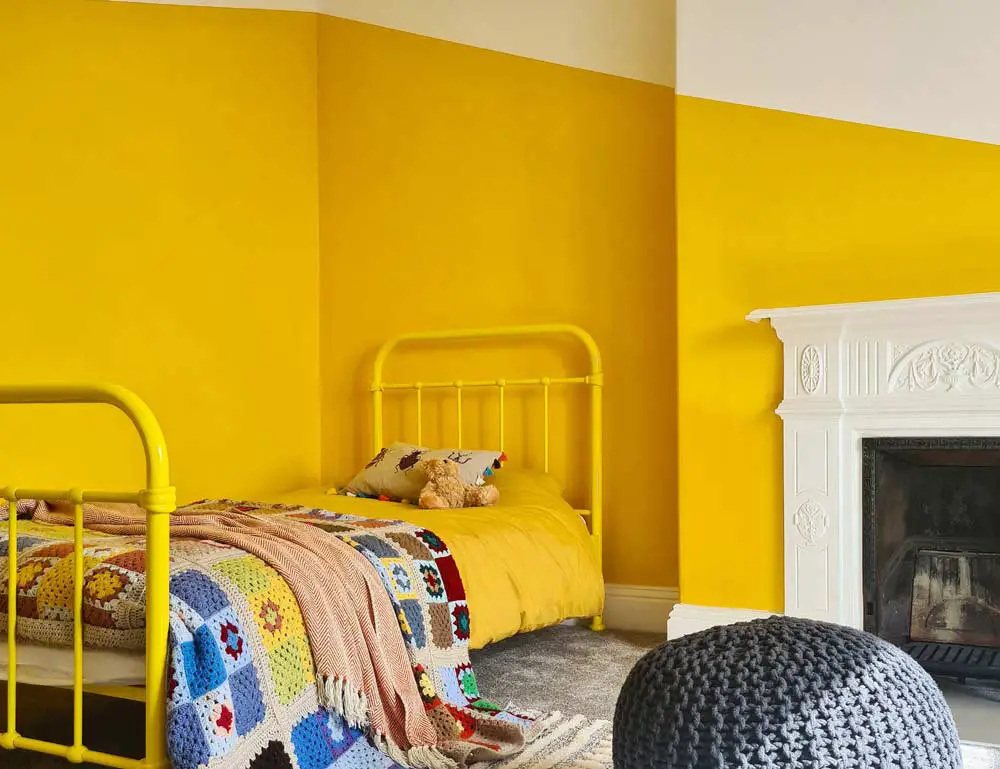
Image credit: mydomaine.com
As a general rule, yellow is not considered a good colour to aid sleep, as it can be bright and stimulating, which boosts alertness and energy levels. So while yellow is often associated with happiness and positivity, it may not be the best choice for a relaxing and restful bedroom environment.
That being said, avoiding bright yellow and instead opting for lighter shades or pastels will make your bedroom space tranquil, soothing, and even potentially stress relieving. All working together to help you fall asleep in peace and harmony.
As well as the colour choice of the walls and other decor, It's important to focus on creating a sleep-friendly environment that works for your individual needs and preferences. This includes elements like lighting, room temperature, and noise levels.
Green
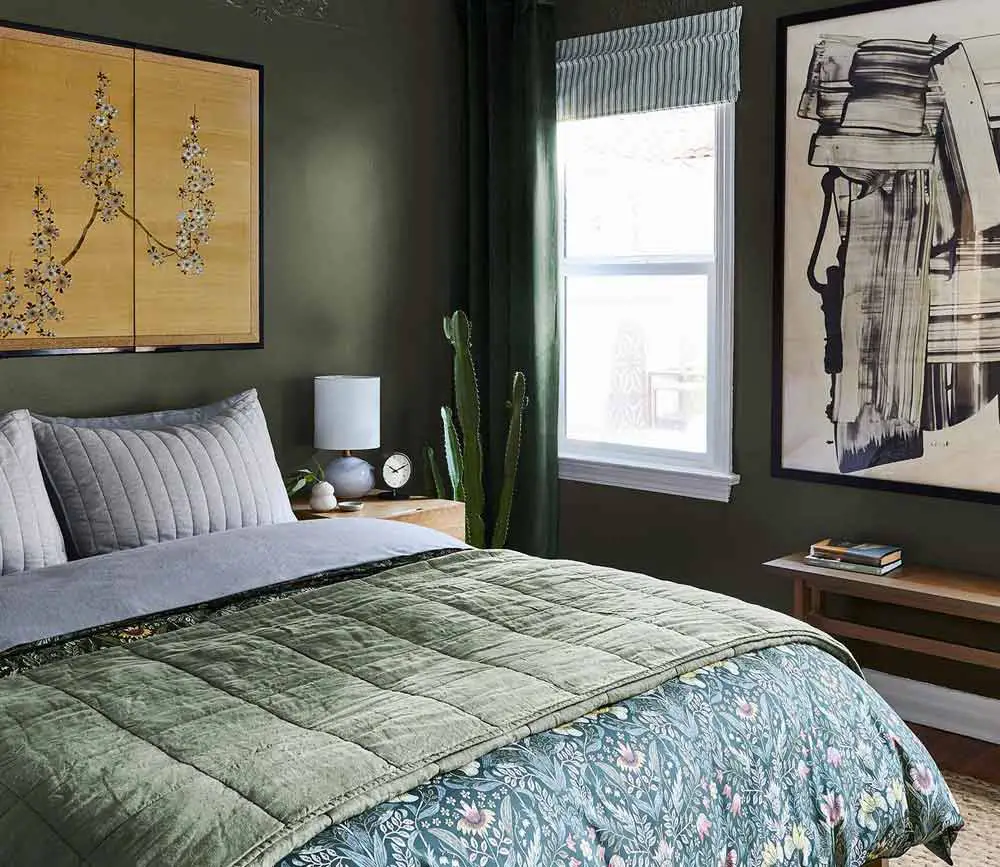
Image credit: clare.com
Another colour choice for encouraging restful sleep quality is green. The sleep coach advises using green hues with blue undertones for the greatest outcome, while warm colours like yellow could adversely make you feel energetic rather than relaxed.
Green is often associated with nature, growth, and relaxation, creating a calming effect that could help promote a feeling of tranquillity and calmness. Additionally, green is a colour that is believed to have a soothing effect on the eyes, which may help relieve eye strain.
Like blue, green also helps to generate a cosy and relaxed ambience in our sleeping space. There are many beautiful green shades within a green palette, ranging from the dark tones of forest green to the lighter tones of pistachio and sage.
If you think about it, we often imagine sitting in wide open grass fields when we need to feel calm, as it's an effective way of making us feel more at peace and part of the world around us.
Orange
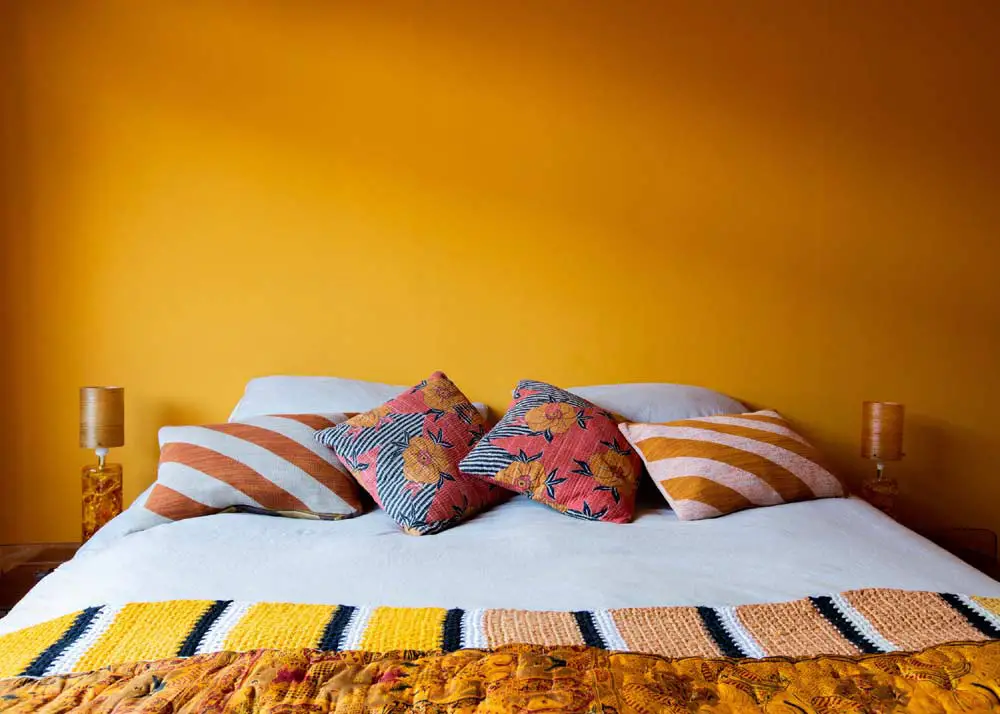
Image credit: jasminehemsley.com
Light orange is comparable to a deep yellow, in that it is a warm and cheerful colour that would benefit any space. Orange is also reported to assist with dyspepsia, which may possibly be keeping you up at night.
Sleep studies have also suggested that exposure to orange light in the evening may help to promote the production of the sleep hormone melatonin. This is because orange light has a lower colour temperature and less blue light than white or blue light, which can disrupt a good night's sleep.
We advise leaning towards more neutral or pastel shades, or even more muted shades of this strong hue when choosing the perfect orange for your bedroom. For instance, rather than using a super-bright Crayola orange, try a terracotta or clay orange with some earthy brown undertones.
Pink
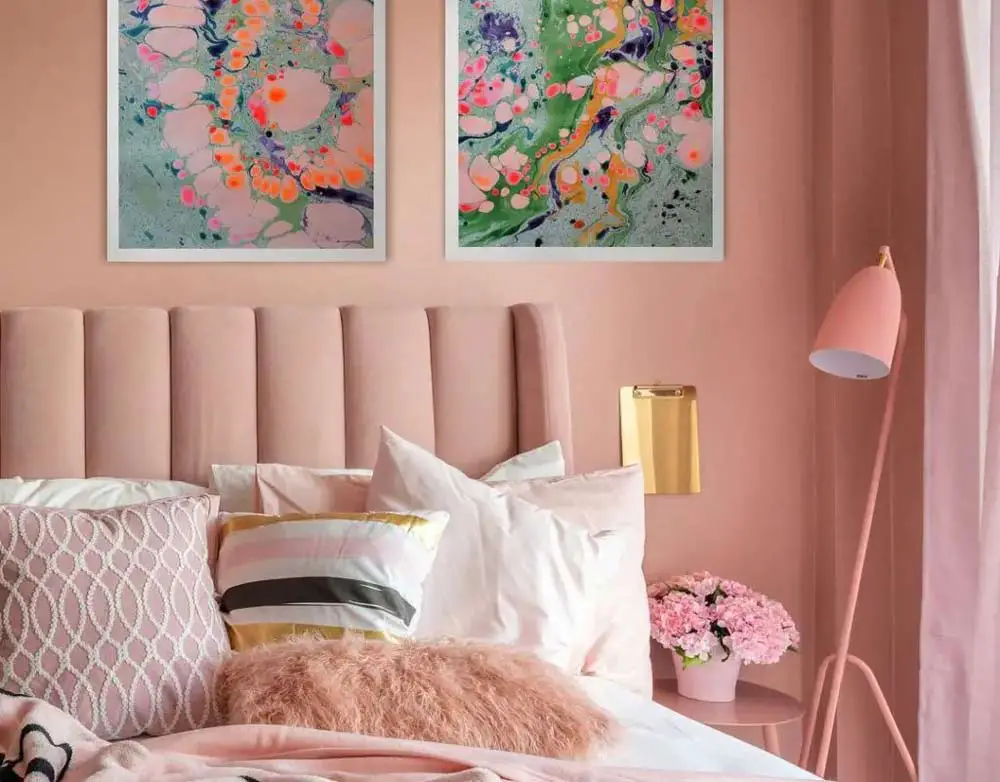
Image credit: roomyoulove.com
Bright pink is often linked to optimism, but the precise effects of pink on the brain have, however, been the subject of many studies throughout the years. Mainly to further understand the link between feminine colour.
pink is also considered a soothing colour that can promote feelings of calmness and comfort. It is also associated with feelings of love, nurturing, and kindness, which may help create a positive and relaxing atmosphere in the bedroom.
Brighter hot pink walls have been shown to lessen violence and decrease blood pressure. Further scholarly study of the highest calibre is required since subsequent investigations have been unable to come to the same result.
Since some individuals found a bright pink to be too vibrant and obtrusive, the most recent jail experiment chose a soft pink instead. Consider using simply one accent wall in the hue or integrating it into your mattress and wall décor if you like a more intense pink in your bedroom.
Colours to Avoid
Black/Dark Grey
Red/Purple
Purple,
Brown
My Final Thoughts
Now that you have an understanding of the best colours for getting a good night's sleep, you are better equipped to make an informed decision of what colour to choose, and a clearer idea of what to stay away from. Remember that paint is easy to alter, so your bedroom can be repainted if you change your mind about the shade or brightness.
It's also worth noting that individual responses to certain colours can vary, and the effects of colour on sleep are also influenced by a variety of other factors, such as personal preference, individual needs, a comfortable sleep environment, relaxation techniques, and healthy sleep habits.
In short, one colour alone may not be enough to promote better sleep and relaxation for everyone.



 Author: Matthew Chiappini
Author: Matthew Chiappini